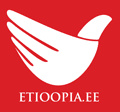Ten pieces of Ethiopia
When arriving to Ethiopa’s capital Addis Abeba which in the local language of amharic means new flower the first impressions were quite eerie. Probably prejudice was partly at fault that grew from the stories heard of this different world which I now had to start getting used to.
I seemed that in traffic no rules applied. A big bus would storm through village streets paying no mind to the children and donkeys on the sides of the road. Everyone had to get by on their own and be responsible for their own safety. I saw how a drowsy hinny ran in front of a bus and got a good whack. Fourtunately it lived. These kind of whacks are sorted out informally. The busdriver has to pay up out but only after couple of ours of insistance from a bunch of locals.
The busdrive was an experience. The bus doesn’t depart on a certain timenor are they based on a schedule. It departs when the seats are full. Furthermore the bus doesn’t depart from a certain spot but from a random place in the station. The ticket vendor, if you can call it so, shouts standing outside and people pour in. It used to be allowed for people to stand in the aisle as much as would fit. Now there is a rule that all the passangers must be seated. In additon a stool was added in the aisle for the ticket vendor to sit on. In reality the a stool ticket was also sold.
In traffic it was the norm that the loads on lorries exceeded resonable dimensions. I saw a lorry carrying timber that went out of balance and the front end wanted to come off the ground when going uphill. To solve the problem the drivers of the lorry climbed on top of the load and started chucking wood off the lorry to the side of the road to ease the load a bit.
Toys
Ethiopian children have to make their toys themselves. In the region that we were at I didn’t see a single toy sold anywhere. Toys are crafted out of very various materials. Almost anything that you can pick up from the streets. Cars were made out of wire with bottlecaps for wheels. The cars were decorated with feathers and with anything that was found to be more merrier than feathers.
The dream and pride of every Ethiopian boy was a football. The balls were usually sewn together from old rags. Football is played barefoot or with slippers and by ethiopians of all ages. Next to the footballfield was a village girl guarding the water canister for the palyers.
I recall a story with football: walking around in the village a lot f the boys would shout “Messi, Messi!” to us. Eventually we figured out that one person from our group might resemble Messi just a bit which brought about the attention. A similar thing happened at the reception of a hotel and for laughs we said that it is not Messi but his brother.
Children of the villages
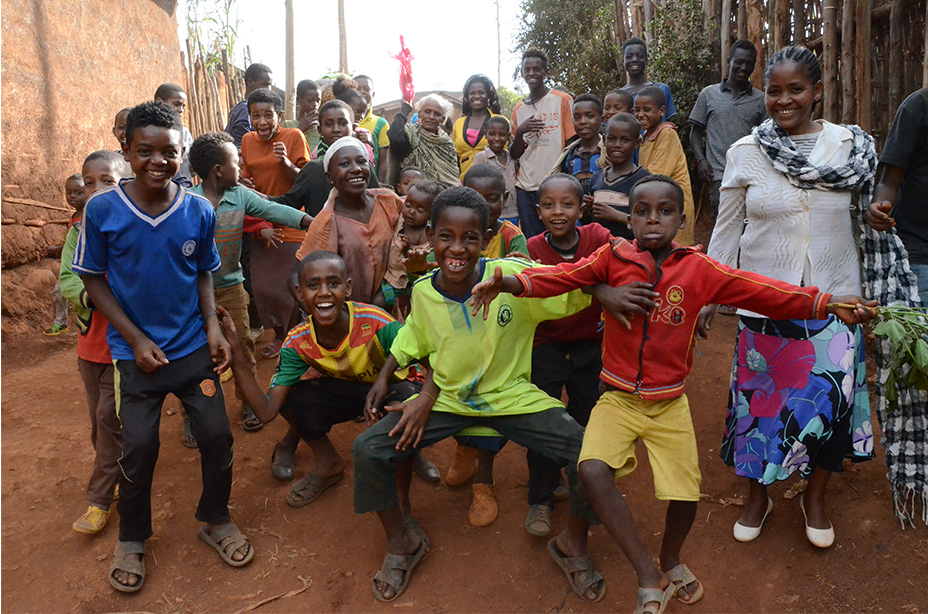
White people are still a rarity in Ethiopia and so we were everyones favourite thing where ever we were. We were sepecially adored by children who would sometimes walk with us for kilometers. I seemed as if noone was watching over them. Three year old boys or girls alongside other children and no adults was a common sight.
The children would observe us loyally for hours and kept on saying “One birr, one birr”. Despite them looking at us with their cute brown eyes we couldnt give them any money. If you let your heart get soft over one child and you give him/her money then all the children of the village will flood in and then there is no easy escape.
Construction
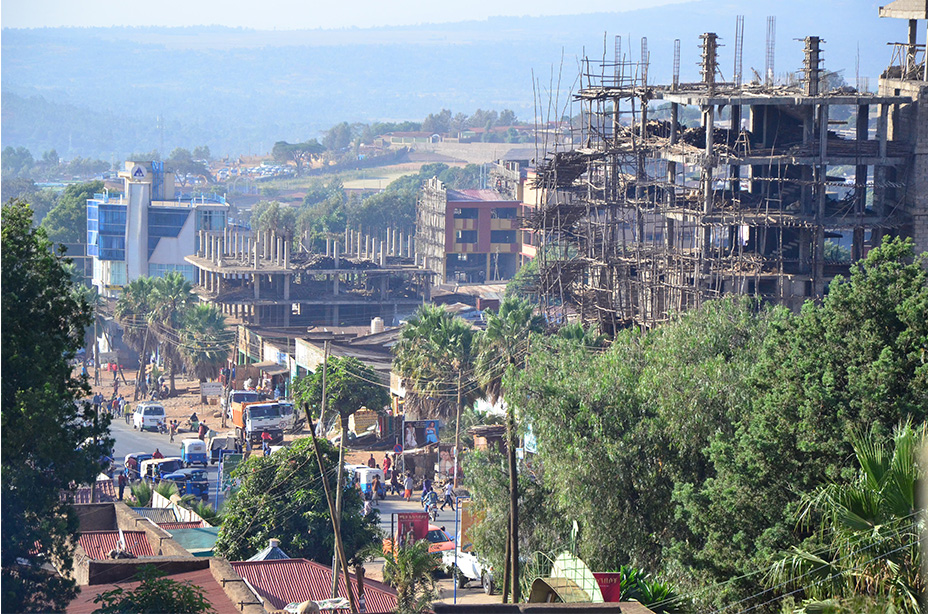
To us the houses the locals lived in resembeled huts.The framework of the house was built out of sturdy eucalyptus and was covered with clay from both in and outside. The houses came in different sizes but often four children, parents, and domestic animals had to make do with just a couple of square meters. In the city construction work was brash – a sign of Ethiopias economic growth. High buildings, eucalyptus scaffolding. You could see workers tens of meters up on the scaffolds and of course without helmets or security. Welding was also done with bare hands and sunglasses and no helmet on
School
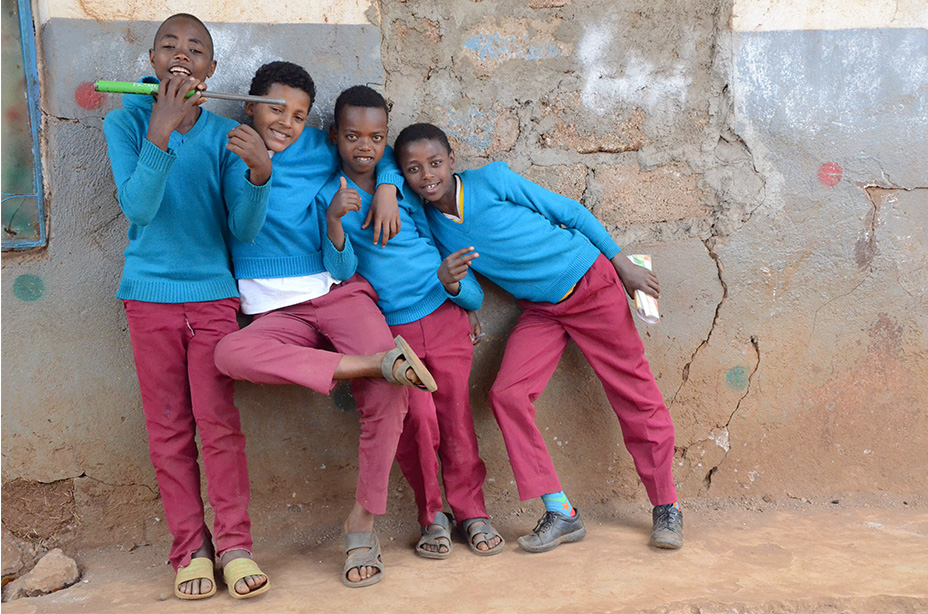
The trip to Ethiopia took place thanks to a good friend Merle who has been there on seven cosecutive years. Helping the children in Ethiopia. Children from underprivileged families who would not have otherwise gotten any chance at all to attend school are getting their education from a private school thanks to the support of estonians. Education seems to be the only option for this country.
Every year Merle and other volunteers go to Ethiopia and do home visits, run health check-ups, discuss with the school board and define the needs of the children. Education for one child costs around 80 euros per year. I connection to the economic growth the price of the uniform, textbooks and materials have gone up. Education means everything to an Ethiopian child.
In state schools there are about one hundered children in each class and so the developement and willingness to learn might go unnoticed. The children from poor families attend a state school at best and often the child skips school to got to work and to help earn a living for the family. In this sense the work that Merle and NGO Damota are doing is especially appreciative. Results can be seen from children who have been attending school for years now thanks to the support. The change begins from the way of thought and increases confidence. Ethiopian children value education and know from an early age who they want to be. That is why they are very eager to study.
When I got to Ethiopia the children started their holiday. Before that I had a chance to see the exams. I noticed that the teachers are much more strict and there also seemed to be a local gaffer on payroll in each school to keep the order.
The children were very open, joyful and fun. Mostly they were very courageous and came to make an aquaintance straight away. I didn’t notice any self-absorbed wallflowers. Rumpus, cheerful screams and bursts of laughter would company us everywhere.
We ran health check-up’s of the children. We had a doctor and his assistants with us. Eyes, teeth, hight and wheight were checked. A common problem was lice. It seemed as if every third child had lice and nits. All we could do was to advise wasing and coming often.
Water
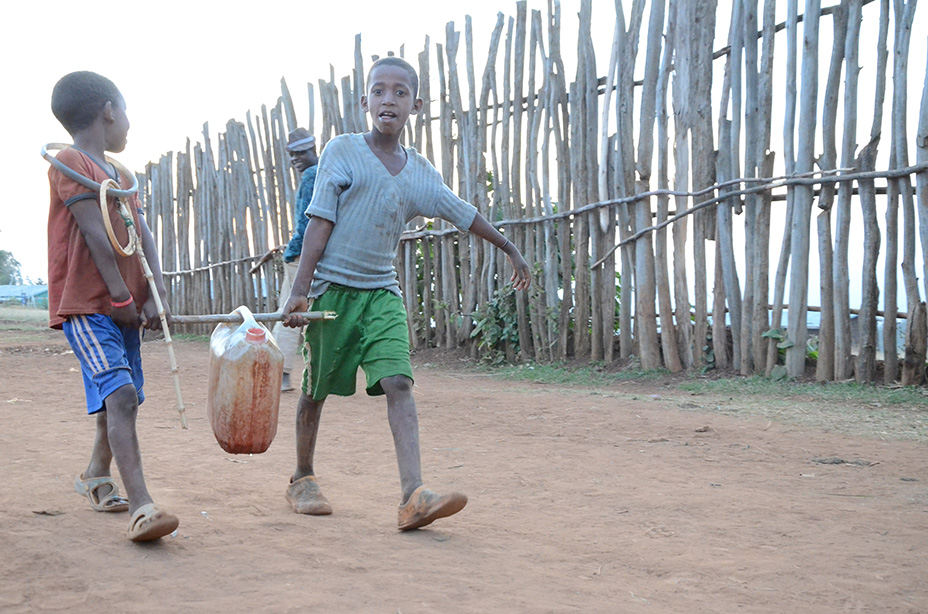
Water is valued in Ethiopia. Many kilometers were walked to get a canister of water for the household. Transporting water was mainly the job for women or children. You could very often see a small child carrying a canister.
A two-year drought which meant thirst and famine had just ended. Millions of people either died or fell ill during thr drought. Water there means life.
Church
Religion seemed important to Ethiopians. Churces were plenty and thousands attended. In one of the churches I noticed a large folder which was full of crosses: this was to note attendance and donations of the young people.
Amanuels family
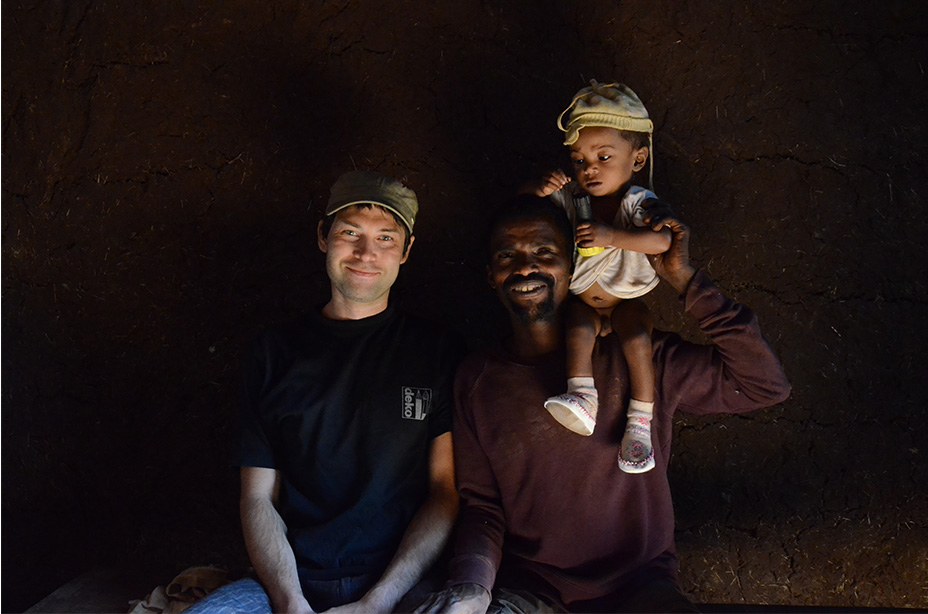
I spent couple of days with a very poor family and observed their everyday activities. A family of five lived in a hut of six square meters: mother, father, three children and besides them two sheep. They didn’t own the sheep but were just raising them.
I gathered that they used to live there as seven, but two children were given to wealthier relatives as helping hands around the house. All for survival. It was common that children from poor families had to go serve for wealthier families. In return they got food and a place to sleep.
Food in the hut was prepared above live fire. Therefor the room was filled with blue smoke and the children drowsy as flies. Despite the fact that the father had gone blind from one eye due to smoke they still firmly believed that it helps to keep the mosquitos out and makes the hut stronger. I did not ice many mosquitos when I was there.
Our humble suggestion to cook outside seemed to make sense only while we were there. The family was poor because the father was weak, couldn’t go to work and the mother had to take care of the cildren who were born one after the other.
Sometimes the school lunch that Amanuel brought home was the only meal of the day. Amanuel has had the oppurtunity to attend school for several years in a row now thanks to the support from the Estonians.
Art lesson
I had the oppurtunity to give art lessons to the children. It isn’t usually on their regular curriculum. Oil pastels and paints are a huge rarity there and the children really enjoyed paintig.
I had brought with me half done works by an estonian artist Andrus Kasemaa who unfortunately is not among us anymore. The idea was that the artist draws the contours and ethiopian children then paint them.
The Estonians
We met with other estonians in Ethiopia. Estonian doctors had come with a project to perform surgeries in the local hospital. All af this was docmented by Ilmar Raag. We introduced the local life and the school life to him and you can read all about it from Ilmar Raag’s blog. From all the things I experienced in Ethiopia the joy bursting out the children contagiously is what I will remeber the most. Children are children despite where or whom as they are born. Shouts of “Varanjo, varanjo” which means a white person in their language will ring in my ears for a long time.
Kristjan Juusu
